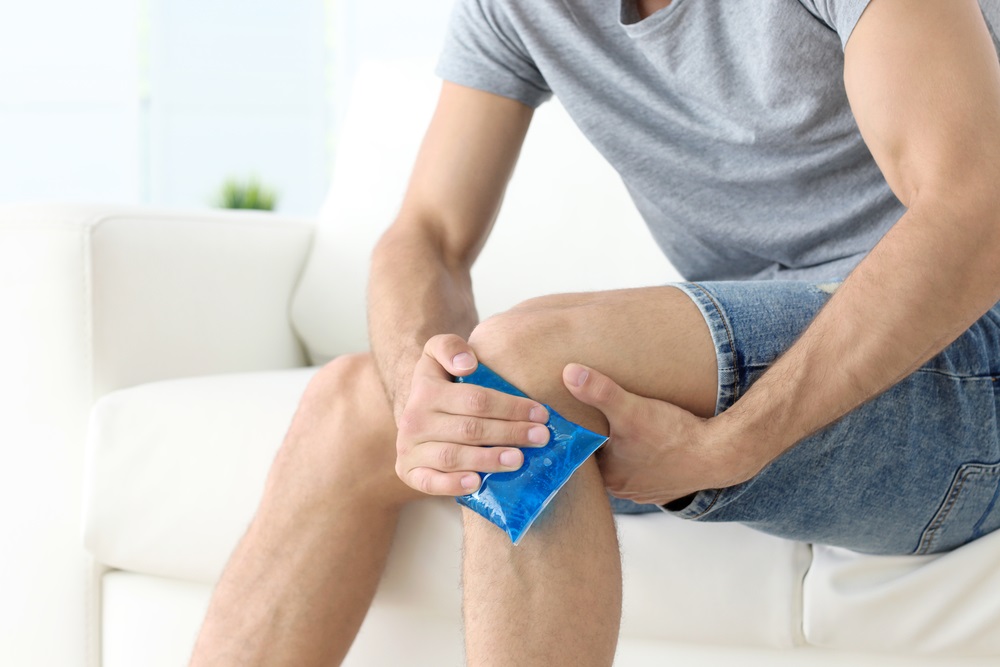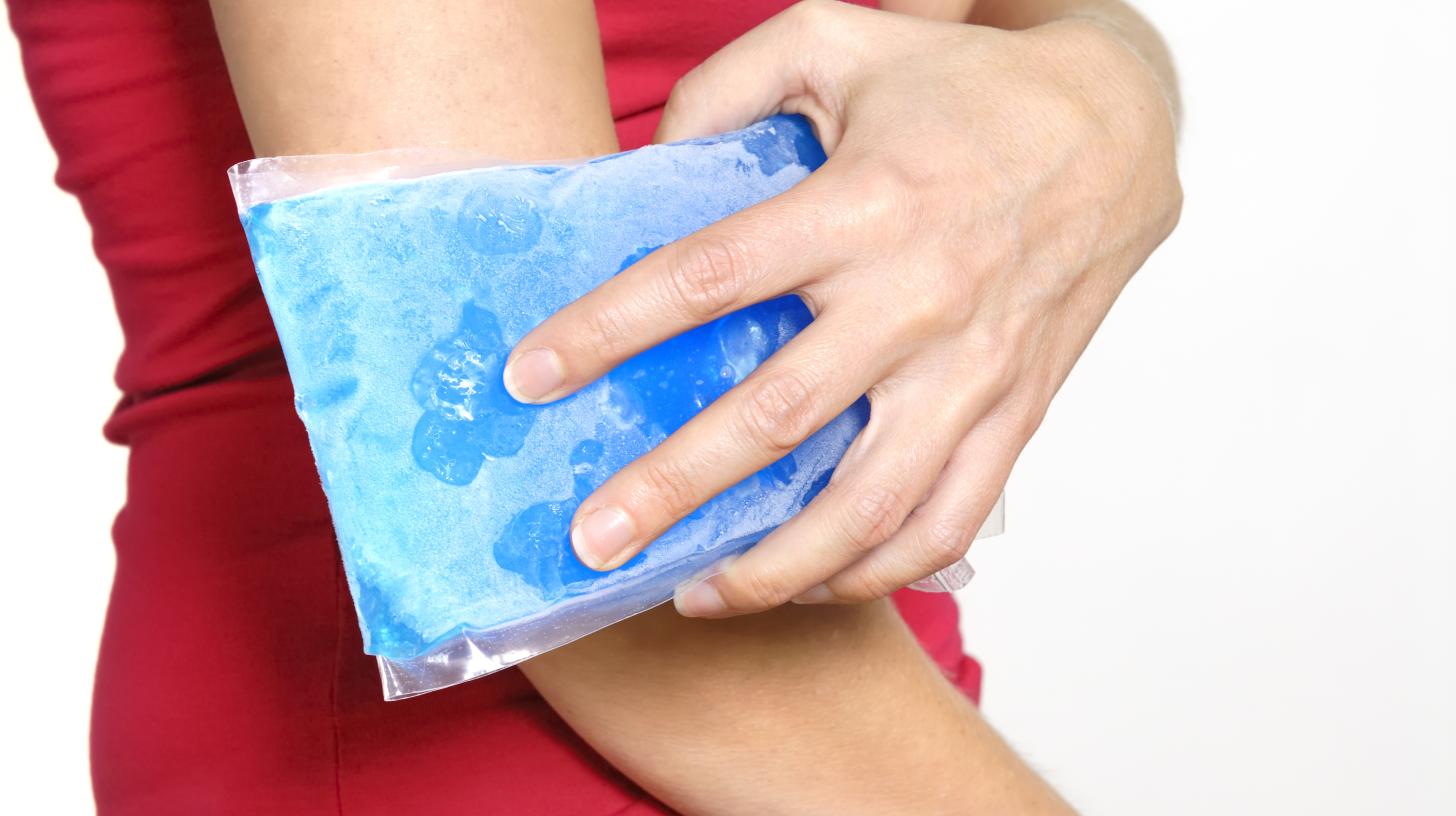- What Is a Warm Compress?
- How to Use Heat Safely?
- What Is a Cold Compress?
- How to Use Ice Safely?
- When Either Heat or Cold Will Do?
- When Should You See a Doctor?
- Follow the Guidelines

Should you apply a warm vs. cold compress to an area on the body for pain? It depends because cold and warmth produce two different results. Though both can reduce pain in joints and tissues, ice packs decrease blood flow, and warm compresses increase it. Cold compresses are useful for decreasing inflammation, while warm compresses are good for conditions like stiff tendons or relieving pain in the lower back.
What Is a Warm Compress?
It is simply something that can be used to apply heat to a spot on the body. A warm compress can be moist or dry. A warm compress encourages blood flow to a particular area by dilating blood vessels in the area where heat is applied. The increased blood circulation to tissues:
- Eases muscle and tendon soreness.
- Accelerates the healing process by delivering nutrients to the area
- Loosens tight muscles.
Types of warm packs
A warm compress can be purchased or made at home with items on hand. They include:
- Electric heating pad
- Washcloth soaked in hot water and excess water wrung out
- Gel pack that can be heated in the microwave
- Hot water bottle
- Heat wrap
- Heating pad

When to use a warm compress?
Warm compresses are used for a variety of purposes. They include
- Eye problems
- Muscle spasms and aches
- Muscle injury
- Neck stiffness
- Upper and lower back pain
- Stiff, tender or swollen joints
- Tension headaches
- Sinus congestion
- Earache due to infection
- Toothache
- Menstrual cramps
When not to use warm compresses?
The warm compress increases blood flow to the targeted area, so there are situations where you should not use it.
- When swelling or inflammation is present because heat increases blood flow to the area and can make the inflammation worse.
- For acute injuries because heat can slow healing by increasing inflammation.
- On injuries that feel warm to the touch because it could indicate an infection is developing.
- If there is deep vein thrombosis because heat may increase swelling or force the dislodgement of a blood clot.
- On an open wound or a wound that is still bleeding.
- When there is a skin condition like eczema, which can be triggered by heat.
- Immediately after vigorous exercise because the blood flow is already high. Wait for at least four hours to apply heat and 48 hours for an injury.
- When a medical condition like diabetes exists because skin sensation may be reduced, meaning you are subject to a burn if the warm compress is too hot and left on the skin too long.

People apply a hot compress after an injury, but applying heat before strenuous activity can relax muscles and ligaments to minimize the chance of aggravating a chronic injury or incurring muscle soreness. Apply the warm compress several times a day for best results.
Some of the medical conditions treated with the application of warm compresses include osteoarthritis, back muscle strain, tendonitis, fibromyalgia, boils and headaches. One of the benefits of a warm compress used every couple of hours is that heat can penetrate to the underlying muscles.
How to Use Heat Safely?
Heat does the opposite of ice. Heat increases blood flow, so it is best used for an acute injury after swelling has subsided or for chronic pain. “Never apply heat immediately after an injury that causes inflammation because the increased blood flow can worsen the condition by increasing swelling,” explains Dr. Ghouri.
The swelling from an injury usually peaks in 2-3 days, so that is when you would begin heat therapy. Applying heat is often advised for relieving sore muscles and the pain and stiffness due to arthritis. Researchers have also found that low-level heat therapy can reduce pain, improve muscle strength and increase flexibility for people with low back pain.
To safely apply heat, use a heating pad, hot water bottle or warm compress. However, you should follow a similar routine to the one for ice. Only apply heat for 10-15 minutes at a time, reapplying only after the skin returns to its normal temperature. You can do this for as long as you need relief.
What is a Cold Compress?
When a cold compress is applied, the blood vessels contract which reduces localized inflammation and swelling. Cold temperatures also numb injured tissues, reducing pain. A cold compress should be applied immediately after an injury or when a joint becomes inflamed.
Types of cold packs
Like the warm compress, you can purchase a cold compress or make a cold compress at home. They include:
- Placing cubed ice in a plastic bag and wrap in a washcloth
- Wrapping a bag of frozen vegetables (peas work well) in a washcloth
- Using an instant chemical cold pack that activates by squeezing the pack
- Using a gel pack that is frozen in the freezer

When to use a cold compress?
How do you know when to use a cold compress instead of a warm one? The first guideline is the cause of the pain. A cold compress for swelling brings relief when applied right away to an injury like an ankle sprain. Some of the conditions that can benefit from cold treatment include the following:
- Recent acute injury with swelling
- Osteoarthritis
- Muscle strains
- Gout
- Tendinitis
- Migraine
When not to use a cold compress?
The cold compress decreases blood flow to the targeted area, which is not recommended in the following situations.
- On an open wound.
- When an infection is present.
- Right before vigorous activity since the cold will reduce blood flow.
- On any body area experiencing poor blood circulation.
- On the left shoulder or around the neck if you have a heart condition.
- On an area that has poor circulation due to a medical condition like diabetes because prolonged application of cold can numb the application area even more and cause tissue damage.
- When there is a medical condition triggered by cold temperatures, like Raynaud’s Syndrome because cold will increase blood flow.
Unlike the warm compress, ice packs should not be used right before vigorously exercising or participating in sports.
How to Use Ice Safely?
Knowing whether to use heat or ice to reduce the pain associated with an injury or inflammation is essential for enhancing recovery. Heat and ice produce different effects.
“Ice constricts blood vessels,” explains Dr. Majid Ghauri, “and works best when applied right after the injury. Typical injuries that respond to the application of ice include pulled muscles, sprains and strains and joint pain. Any cold application works, including a bag of frozen vegetables, ice in a bag or a cold compress.
While ice is an effective treatment for some injuries, it is important to remember that ice, or anything as cold as ice like an ice bag, can burn the skin if left in direct contact with it for too long. Applying melting ice through a wet towel for repeated periods of 10 minutes each for soft tissue injury is effective and helps to avoid side effects, like burned skin. In between each ice application, the skin needs enough time to return to its normal temperature.
Dr. Ghauri also advises, “People with neuropathy, Raynaud’s syndrome or any other medical issue that dulls the skin’s sensitivity to cold should use extra caution to avoid burning the skin.” Be careful not to lose track of time in any situation because you should never leave the ice pack or ice wrap on longer than 20 minutes.
When Either Heat or Cold Will Do?
In some situations, you can use heat or cold compresses or alternate heat and cold compresses in contrast therapy.
- When experiencing muscle spasms or pain, including neck spasms causing headaches.
- For joint pain due to conditions like fibromyalgia, osteoarthritis and rheumatoid arthritis.
- For back and neck pains.
- For muscle soreness.
- During a muscle, tendon or ligament injury’s healing period, you can apply ice during the first 24 hours and heat in the later stage.
- During the early stages of a bruise, apply a cold compress first to reduce inflammation and swelling by slowing down blood flow into surrounding tissues, followed by a warm compress to disperse the bruise by increasing blood flow.
When Should You See a Doctor?
Sometimes, it is challenging to determine if you need medical attention rather than applying ice or heat at home. If you incur an injury that limits your ability to function or the pain persists after a couple of days or gets worse, you should see a doctor.
Additional signs you should see a doctor include injuring a joint, like a knee or foot, and being unable to put weight on it, experiencing severe bruising or noticing a physical deformity. Also, if ice or heat does not seem to have an effect and the pain and swelling remain the same after a couple of days, you should see a doctor.
Follow the Guidelines
There are a few guidelines to keep in mind. One is to only apply a cold or warm compress for a maximum of 20 minutes. Another guideline is to be careful to not damage the skin from a compress that is too hot or too cold. The skin should look pink and not red or white. The skin should be allowed to reach its normal temperature before reapplying a cold or hot compress. Finally, only use compresses on areas where the skin is not broken. If the compress does not bring pain relief, see a doctor for evaluation.
Sources
- https://pubmed.ncbi.nlm.nih.gov/11510876/
- https://www.ncbi.nlm.nih.gov/pmc/articles/PMC8401625/
- https://www.niams.nih.gov/health-topics/sports-injuries/diagnosis-treatment-and-steps-to-take